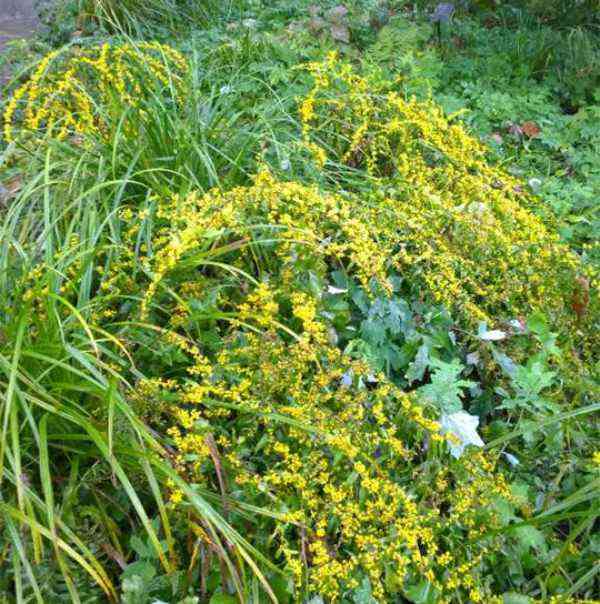Your cart is currently empty!
Caring for a Globe Caragana (Caragana arborescens)
Discover how to keep your Globe Caragana thriving in tough weather conditions with our comprehensive care guide based on expert tips.
Your cart is currently empty!
Photo:
Fritzflohrreynolds, CC BY-SA 3.0 via Wikimedia Commons
The blue-stemmed goldenrod is sometimes referred to as Wreath Goldenrod. It is a well-behaved woodland species. It forms pretty, loose clumps with arching stems and long, thin leaves. Tiny clusters of bright yellow flowers form in the leaf axils for half the stem’s length. Stem color in mature plants has a dark, bluish tone.
The blue-stemmed goldenrod attracts many pollinators such as bees and butterflies. White-tailed deer may browse the foliage, but they are generally unpalatable to deer or rabbits.
Botanical Name: Solidago caesia
Also Called: Wreath Goldenrod
En français: Verge d’or bleuâtre
See More Plants in this Botanical Family:
Colour:
Sun / Shade:
Water: Adaptable to moisture
Soil:
Height:
Pollinators:
Care:
It is commonly mistaken for a plant that causes hayfever, but this is not the case. Hayfever is caused by wind-borne pollen, but the pollen from the blue-stemmed goldenrod is actually transported from bloom to bloom by bees, butterflies and other pollinators.

It can be found in nature in open deciduous woods. It is popular in native plant gardens, open woodland gardens, borders, wild gardens, cottage gardens, meadows, and butterfly gardens.
The blue-stemmed goldenrod is usually found in upland woods where deciduous trees dominate. It bears bright yellow flowers in the fall, which are on long, slender stems that turn bluish or purplish with age. It is a perennial that grows 1-3 feet and tolerates shade and various soils.
Plants are tough. Easily grown in average, dry to medium, well-drained soils in full sun to part shade, and does not spread aggressively as do some of the other goldenrod species and hybrids.
Companion plant suggestions include Try pairing Solidago caesia with Aster cordifolius, Chasmanthium latifolium, Chrysogonum virginianum, Heliopsis helianthoides or Amsonia hubrichtii.
Deadhead to prevent self-seeding. Divide in spring or fall.
It may be affected by powdery mildew, rust, or fungal spots.
Discover the differences among many these goldenrods.
They each have their own uniqueness.
Discover how to keep your Globe Caragana thriving in tough weather conditions with our comprehensive care guide based on expert tips.
Learn the specific pruning needs of your clematis based on its flowering season to promote healthy growth and vibrant blooms. Expert tips and techniques explained.
Cultivate your own mini-orchard indoors with minimal effort and ingenuity with Tips On Growing Citrus Indoors Zone 7 or Lower. Learn the secrets to growing a lemon tree and other citrus fruits inside with the right type of tree, organic lemon, good quality soil and more!
Indulge in a vegan Carrot Spice Cake with this easy recipe! Imperfect carrots can still make a delicious treat on a cold, snowy day. Grated carrots, spices, and golden raisins add a unique flavor to this lovely cake.
Virginia waterleaf is an excellent choice for shady areas and woodland gardens that can spread quickly, cover bare spots and help stop soil erosion. It comes in white and violet colours and has edible leaves that can be used in cooking. Discover more about it and its companion plants. Enhance your woodlands with Virginia Waterleaf. Discover the perfect choice for shady areas and woodland gardens – Virginia Waterleaf! Native to various regions in North America, it blooms in white and violet, and can spread quickly from rhizomes to provide groundcover, reduce erosion and provide edible leaves.
White spruce provides nesting sites, shelter, as well as food for many kinds of wildlife. If you love seeing wildlife, its a good choice.
GardeningCalendar.ca gets some funding from advertisers. If you click on links and advertisements at no cost to you, the site may receive a small commission that helps fund its operation.
© 2025 J&S Calendars Ltd.
Leave a Reply
You must be logged in to post a comment.